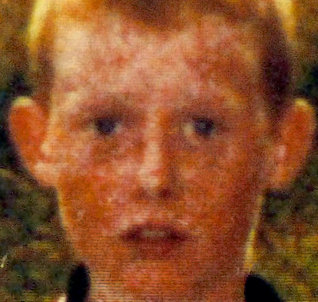Inquests in England and Wales are held into sudden or unexplained deaths and also into the circumstances of and discovery of a certain class of valuable artefacts known as "treasure trove". In England and Wales, inquests are the responsibility of a coroner, who operates under the jurisdiction of the Coroners and Justice Act 2009. In some circumstances where an inquest cannot view or hear all the evidence, it may be suspended and a public inquiry held with the consent of the Home Secretary.
A coroner is a government official who is empowered to conduct or order an inquest into the manner or cause of death, and to investigate or confirm the identity of an unknown person who has been found dead within the coroner's jurisdiction.
Henry Bruce Stanley, known as Harry Stanley, was a painter and decorator who was shot and killed by British armed police in contentious circumstances. Initially his death was recorded with an open verdict, before being ruled as unlawful killing by a jury on appeal and finally returned to an open verdict by the high court.
Anthony David Bland was a supporter of Liverpool F.C. injured in the Hillsborough disaster. He suffered severe brain damage that left him in a persistent vegetative state as a consequence of which the hospital, with the support of his parents, applied for a court order allowing him to "die with dignity". As a result, he became the first patient in English legal history to be allowed to die by the courts through the withdrawal of life-prolonging treatment including food and water.
The open verdict is an option open to a coroner's jury at an inquest in the legal system of England and Wales. The verdict means the jury confirms the death is suspicious, but is unable to reach any other verdicts open to them. Mortality studies consider it likely that the majority of open verdicts are recorded in cases of suicide where the intent of the deceased could not be proved, although the verdict is recorded in many other circumstances.
After 1998, it was theorised that there was an orchestrated criminal conspiracy surrounding the death of Diana, Princess of Wales. Official investigations in both Britain and France found that Diana died in a manner consistent with media reports following the fatal car crash in Paris on 31 August 1997. In 1999, a French investigation concluded that Diana died as the result of an accident. The French investigator, Judge Hervé Stephan, concluded that the paparazzi were some distance from the Mercedes S280 when it crashed and were not responsible. After hearing evidence at the British inquest, a jury in 2008 returned a verdict of "unlawful killing" by driver Henri Paul and the paparazzi pursuing the car. The jury's verdict also stated: "In addition, the death of the deceased was caused or contributed to by the fact that the deceased were not wearing a seat belt and by the fact that the Mercedes struck the pillar in the Alma Tunnel rather than colliding with something else".

The death of Brian Rossiter occurred at Cork University Hospital in Cork, Ireland, on 14 September 2002, as a result of head injuries he had sustained several days earlier. Fourteen-year-old Brian Rossiter had been arrested for a public order offence on the night of 10/11 September 2002, falling into a coma whilst in custody at Clonmel garda station. Prior to his arrest, Rossiter had been assaulted by Noel Hannigan, who was later found guilty of this offence and sentenced to two and a half years imprisonment. However, the case was the focus of much controversy and media speculation within Ireland, owing to concerns as to whether the injuries that caused Rossiter's death occurred, not as a result of Hannigan's assault, but while he was in custody.

Ian Tomlinson was a newspaper vendor who was killed from being struck by a police officer during the 2009 G-20 summit protests. After an inquest jury returned a verdict of unlawful killing, the officer, Simon Harwood, was prosecuted for manslaughter. He was found not guilty but was dismissed from the police service for gross misconduct. Following subsequent civil proceedings, the Metropolitan Police paid Tomlinson's family an undisclosed sum and acknowledged that Harwood's actions had caused Tomlinson's death.

Liddle Towers was an electrician and amateur boxing coach from Chester-le-Street, County Durham, England, who died following a spell in police custody in 1976.
Roger Stephen R. J. Sylvester was a mentally ill man who died after being detained outside his home in Tottenham, London, by eight Metropolitan Police officers. It was reported that his neighbours had complained to police of a disturbance after Sylvester had started banging on his own front door, naked.
Oluwashijibomi "Shiji" Lapite was a 34-year-old Nigerian asylum seeker who died in the back of a police van shortly after being detained by two officers from Stoke Newington police station in London.
Gunasegaran Rajasundram was a Royal Malaysian Police detainee who died in the police lock-up while under arrest for suspicion of drug possession. Coincidentally, his death was on the same day as Teoh Beng Hock's body was found. The case of R. Gunasegaran is crucial to the discussion on police practices because it highlights several issues with the policing of Malaysia: the safety of whistleblowers, human rights during police custody, the procedures of inquests, and the practices of the police force. Understanding this case could bring us to find out what more could be done to better the policing system of Malaysia.
Paul Knapman DL was Her Majesty's coroner for Westminster, from 1980 to 2011. His responsibility for investigating sudden deaths as an independent judicial officer saw him preside over numerous notable cases.

Christopher Alder was a trainee computer programmer and former British Army paratrooper who had served in the Falklands War and was commended for his service with the Army in Northern Ireland. He died while in police custody at Queen's Gardens Police Station, Kingston upon Hull, in April 1998. The case became a cause célèbre for civil rights campaigners in the United Kingdom. He had earlier been the victim of an assault outside a nightclub and was taken to Hull Royal Infirmary where, possibly as a result of his head injury, staff said his behaviour was "extremely troublesome." He was escorted from the hospital by two police officers who arrested him to prevent a breach of the peace.

Mark Duggan, a 29-year-old British man, was shot and killed by police in Tottenham, North London on 4 August 2011. The Metropolitan Police stated that officers were attempting to arrest Duggan on suspicion of planning an attack, and that he was in possession of a handgun. Duggan died from a gunshot wound to the chest. The circumstances of Duggan's death resulted in public protests in Tottenham, which led to conflict with police and escalated into riots across London and other English cities.

Sean Rigg was a 40-year-old black British musician and music producer who suffered from paranoid schizophrenia. He died following a cardiac arrest on 21 August 2008 while in police custody at the entrance to Brixton police station, South London, England. The case became a cause célèbre for civil rights and justice campaigners in the United Kingdom, who called for "improvement and change on a national level" regarding deaths in police custody and the police treatment of suspects with mental health issues.
Henry Foley was a 67-year-old retired bus driver from Southport, Merseyside, in England, who died from injuries inflicted by a police officer while in custody. Sergeant Alwyn Sawyer, his assailant, was convicted of manslaughter, the most recent case of a British police officer to be convicted of killing someone in custody.
Jordan Lee Begley, also known as Jordon Begley, a 23-year-old English man, died of cardiac arrest on 10 July 2013. An inquest in 2015 found that Begley's death had been partly due to the actions of Greater Manchester Police officers who shot him with a Taser while they restrained and handcuffed him around two hours prior to his death.

Julieka Ivanna Dhu was a 22-year-old Australian Aboriginal woman who died in police custody in South Hedland, Western Australia, in 2014. On 2 August that year, police responded to a report that Dhu's partner had violated an apprehended violence order. Upon arriving at their address, the officers arrested both Dhu and her partner after realising there was also an outstanding arrest warrant for unpaid fines against Dhu. She was detained in police custody in South Hedland and was ordered to serve four days in custody in default of her debt.
Sipho Mutsi was a regional organiser for the Congress of South African Students (COSAS) who was arrested at a bus stop in Odendaalsrus, Free State on 4 May 1985. He died in detention the following day, having been severely beaten by some members of the South African Police in Odendaalsrus. He was the first COSAS member to die in police custody.






